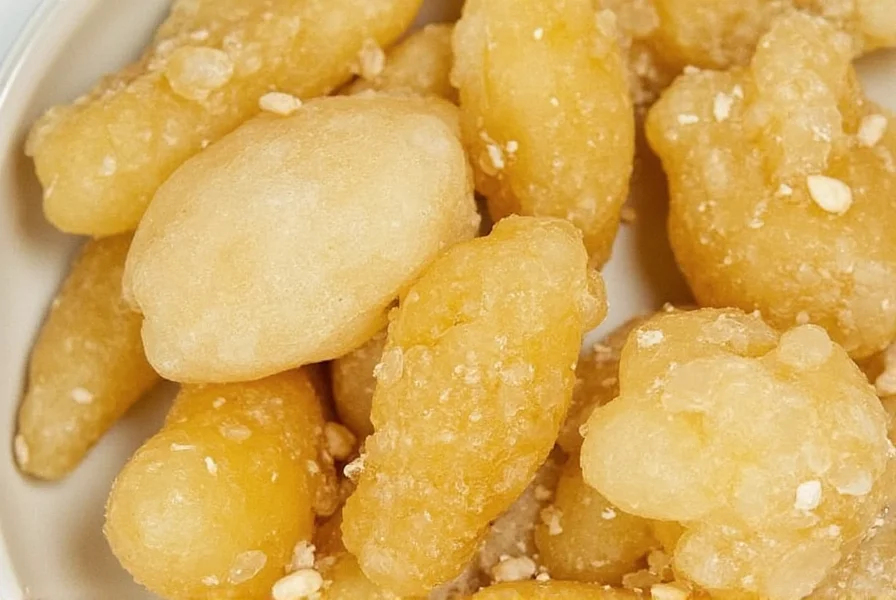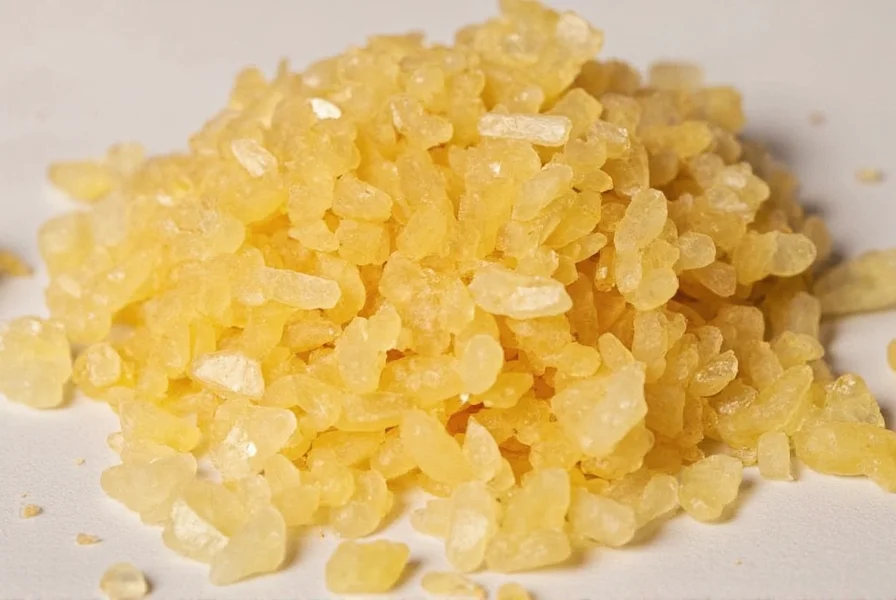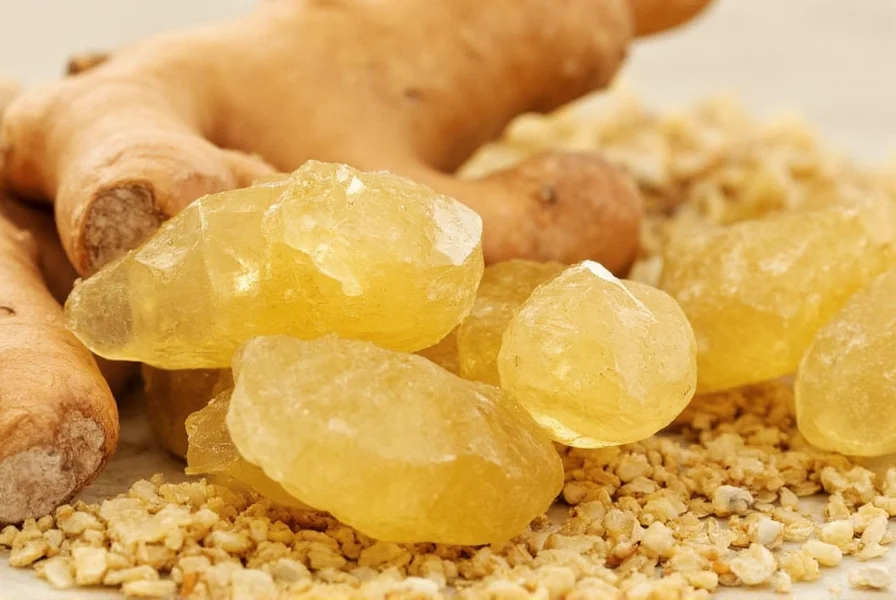Ginger crystals represent one of the most versatile preserved forms of ginger root, transforming the pungent rhizome into a shelf-stable ingredient with distinctive sweet-spicy characteristics. Unlike powdered ginger which loses volatile compounds during processing, crystallized ginger maintains significant concentrations of gingerols and shogaols—the bioactive compounds responsible for ginger's therapeutic effects. This preservation method dates back centuries across Asian and Middle Eastern culinary traditions, where ginger was candied to extend shelf life while creating a portable digestive aid.
How Ginger Crystals Are Made
The production process for high-quality ginger crystals involves careful selection of young ginger roots, which have thinner skin and higher moisture content. After thorough washing and peeling, the ginger is sliced into uniform pieces approximately 1/4 inch thick. These slices undergo a slow simmering process in sugar syrup, typically over several hours, allowing the ginger to absorb sweetness while maintaining its fibrous structure. The gradual sugar infusion prevents the ginger from becoming overly hard while preserving its natural compounds. Following the simmering stage, the pieces are drained and rolled in coarse sugar crystals before air-drying to achieve the characteristic crunchy exterior.

Nutritional Profile and Health Benefits
Ginger crystals maintain approximately 70-80% of the gingerol content found in fresh ginger, depending on processing methods. While the sugar content increases during crystallization, the resulting product still delivers significant health-promoting compounds. Research indicates that regular consumption of ginger in preserved forms like crystallized ginger may support digestive health by accelerating gastric emptying and reducing nausea. The anti-inflammatory properties remain intact, potentially benefiting those with osteoarthritis or muscle soreness. Unlike ginger supplements which may contain concentrated extracts, ginger crystals provide a more moderate, food-based delivery of these compounds.
| Nutrient (per 1 oz serving) | Ginger Crystals | Fresh Ginger |
|---|---|---|
| Calories | 110 | 19 |
| Total Sugar | 25g | 2g |
| Gingerols | 8-10mg | 12-15mg |
| Dietary Fiber | 1g | 0.8g |
Culinary Applications and Usage Tips
Professional chefs and home cooks value ginger crystals for their dual sweet-spicy profile that adds complexity to both sweet and savory dishes. When incorporating ginger crystals into baking, chop them finely and toss with flour to prevent sinking in batters. For tea preparation, steep one tablespoon of chopped crystallized ginger in hot water for 5-7 minutes—the sugar content naturally sweetens the beverage while delivering ginger's benefits. In savory applications, finely diced ginger crystals work exceptionally well in marinades for poultry or fish, where their sugar content promotes caramelization during cooking. Many pastry chefs recommend using crystallized ginger in place of candied fruit in traditional recipes like Christmas pudding for a more sophisticated flavor profile.

Comparison with Other Ginger Products
Understanding the differences between various ginger preparations helps consumers select the right form for their needs. Fresh ginger offers the highest moisture content and most intense heat but has limited shelf life. Dried ginger powder provides concentrated flavor but loses some volatile compounds during processing. Pickled ginger (gari) serves primarily as a palate cleanser with vinegar-based preservation. Ginger crystals uniquely balance sweetness with ginger's characteristic heat, making them particularly effective for nausea relief without the intense burn of fresh ginger. For those seeking ginger's digestive benefits without strong flavor, crystallized ginger often proves more palatable than supplements or fresh preparations.
Storage Recommendations and Shelf Life
Proper storage significantly extends the usability of ginger crystals. Store them in an airtight container away from direct sunlight at room temperature for up to six months. For longer preservation, refrigeration can extend shelf life to one year while maintaining optimal texture. Avoid storing ginger crystals in humid environments as moisture absorption causes the sugar coating to dissolve. If crystallization occurs in the syrup (visible as sugar crystals forming in the container), gently warming the container in hot water will return the syrup to its proper consistency without affecting quality.
Potential Considerations and Side Effects
While generally safe for most people, ginger crystals contain significant sugar content that may concern those monitoring carbohydrate intake. A single ounce typically contains 25 grams of sugar, equivalent to about six teaspoons. Individuals taking blood thinners should consult their healthcare provider before consuming large quantities of any ginger product, as ginger may enhance anticoagulant effects. Those with gallstone issues should also exercise caution, as ginger stimulates bile production. For most adults, consuming 1-2 ounces of ginger crystals daily falls within safe consumption limits established by health authorities.
Frequently Asked Questions
What's the difference between ginger crystals and candied ginger?
Ginger crystals and candied ginger refer to the same product—pieces of ginger root preserved in sugar syrup and coated with sugar. The terms are used interchangeably, though some manufacturers use “crystals” to emphasize the sugar coating. Both maintain similar nutritional profiles and uses in cooking and wellness applications.
Can ginger crystals help with morning sickness during pregnancy?
Many pregnant women find ginger crystals effective for managing morning sickness due to their concentrated ginger content and convenient, portion-controlled format. Research suggests ginger consumption of up to 1 gram daily is generally safe during pregnancy. However, pregnant women should consult their healthcare provider before using ginger products regularly, especially if they have a history of bleeding disorders or are close to delivery.
How do I make ginger crystals at home without preservatives?
To make preservative-free ginger crystals, peel and slice fresh ginger, then simmer in equal parts water and sugar for 45-60 minutes until translucent. Drain the ginger pieces, reserving the syrup, and roll in organic cane sugar. Air-dry on a wire rack for 2-3 hours. Store in an airtight container with a small amount of the reserved syrup to maintain moisture. Homemade versions typically last 2-3 weeks at room temperature.
Are ginger crystals as effective as fresh ginger for digestive issues?
Ginger crystals retain approximately 75% of the gingerols found in fresh ginger, making them nearly as effective for digestive support. The sugar content in crystallized ginger may actually enhance its effectiveness for nausea relief by providing quick energy while the ginger compounds work on stomach receptors. For immediate digestive upset, crystallized ginger often works faster than fresh ginger because the compounds are more readily available in the preserved form.
What's the best way to incorporate ginger crystals into daily wellness routines?
For optimal wellness benefits, consume 1-2 small pieces (about 10-15g) of ginger crystals 30 minutes before meals to support digestion. Alternatively, steep chopped ginger crystals in hot water for 5 minutes to create a soothing tea. Many nutritionists recommend pairing ginger crystals with lemon and mint for enhanced digestive effects. For motion sickness prevention, chew one piece 1 hour before travel and another during the journey as needed.











 浙公网安备
33010002000092号
浙公网安备
33010002000092号 浙B2-20120091-4
浙B2-20120091-4